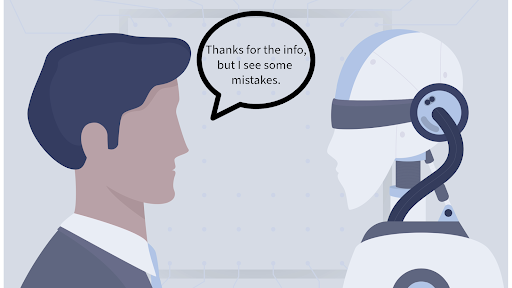Attending CSEdCon was truly an enlightening experience for me. This three-day conference delved into the intricate connections between AI, education, and computer science. As I sat through thought-provoking sessions such as "AI and the Future of Education," "Reaching Rural Regions," and "Early Experiences in Teaching with AI," I found myself deeply engaged in discussions. These dialogues solidified some of my existing beliefs about AI in education while presenting fresh perspectives that broadened my understanding.
A few stand-out observations from the conference include:
- AI promises to transform the landscape for teachers and software engineers. While it will not replace human expertise, the importance of adapting and capitalizing on AI tools cannot be understated.
- The growing demand for AI skills is undeniable, emphasizing both technical and interpersonal attributes like communication and ethics. Yet, the gender disparity in AI is concerning and demands immediate attention.
- AI's potential in refining computational thinking, tailoring learning experiences, and simplifying coding is evident. But challenges, such as inherent biases and inaccuracies, persist.
- Embracing AI in classrooms has showcased notable benefits, including improved student outcomes. However, there's an underlying risk: if not accessible to all, it might intensify existing inequities.
- The future of CS education is poised for change. Expect a decline in traditional tasks and languages, like HTML, and a surge in innovative modalities like block-based coding and audio input/output methods.
- One crucial takeaway is the need to arm students with discerning knowledge about computer capabilities, ensuring they utilize AI with wisdom and responsibility.
As an edtech consultant and advocate, I frequently interact with educators apprehensive about AI's profound impact on education and the world at large. My experience at CSEdCon has equipped me with talking points that can assuage such concerns. For instance:
- AI's ability to offer personalized, immediate feedback.
- The automation of routine tasks, granting teachers more quality time for instruction.
- Engaging AI-powered chatbots that make learning interactive.
- AI's prowess in assessing student understanding and identifying gaps.
- Novel brainstorming techniques introduced by AI text generation models.
- AI-powered 24/7 tutoring systems.
- The myriad ways students can employ AI for dynamic study materials.
The onset of AI in education marks just the beginning. Our collective task now is to ensure educators recognize its potential. We must guide our students to ethically and effectively wield AI.
For educators looking ahead, consider these key points:
- AI is redefining numerous sectors. Acquainting students with AI tools will be instrumental, irrespective of their career paths.
- Cultivating a robust understanding of AI systems, emphasizing their strengths and flaws, is crucial.
- Encouraging students to discern potential AI biases ensures ethical engagement.
- As AI handles routine chores, honing soft skills in students becomes paramount.
- Recognizing the soaring demand in AI-centric roles can shape future academic curricula.
- With AI knowledge becoming a staple in most professions, disregarding its importance may jeopardize students' future employability.
- While predicting AI's trajectory is challenging, imparting foundational principles to students ensures they remain agile and adaptable in a dynamic future.



